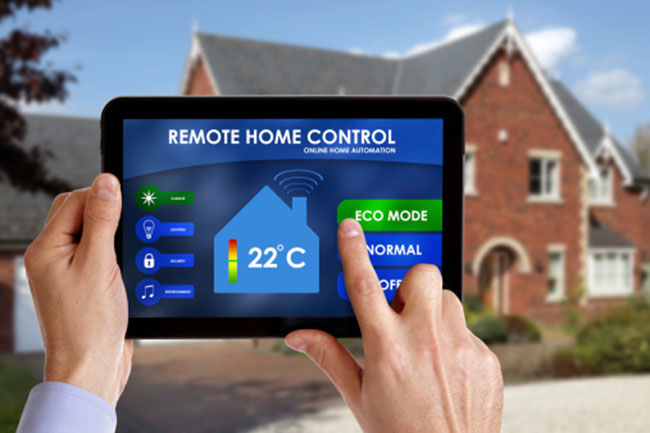Have you seen those commercials on television for a cable/Internet provider that shows some dad or mom using their mobile phone to control all of the lights and locks? In fact, one particular commercial even shows a faucet that was left running by one of the kids in the family being turned off remotely!
That specific commercial leads to two very important questions. First of all, what kind of brain-dead idiot walks out of the house and leaves a faucet running at full blast? Second, is this commercial for real? Can people control their home security and appliances to such an extent from a remote location, or is this an outtake from a bad science fiction movie made in the 70’s?

The Internet of Things is poised to boost home security into the 21st century
In order to answer the first question, we’d need a neurologist, so let’s just skip that one. But as for the second question, yes, it is possible, and it’s thanks to the Internet of Things (IoT).
The Internet Of What, Now???
IoT involves the connectivity of objects, appliances, vehicles, even household pets onto a network, either hard-wired or wireless. Each “thing” is equipped with a sensor, software, and Internet connectivity, and doesn’t require any human interaction.
These things gather information and send it along automatically. So, your front door lock, burglar alarm, heart rate monitor, pet location microchip, and yes, even kitchen sink water faucet can all be part of IoT, sending information and receiving commands.
Naturally, you have to make sure that your appliances and systems can be connected to the network, and in some cases that means getting new equipment that conforms to the IoT standards. As you can see in the article “The Dos and Don’ts Of Installing Home Surveillance Cameras”, having the right product properly installed is extremely important in order to get maximum performance.
IoT Rewriting The Book On Home Security
What the Internet of Things does in terms of home security is not only make it easier to access and monitor security systems, it also greatly increases the number of things that can be controlled by said system. In other words, IoT places more power in your hands.
It has gotten to the point where a homeowner can use his or her smart phone to remote turn lights on and off, confirm that the cat is indoors, and monitor things like smoke alarms, carbon monoxide detectors, and of course the burglar alarm. The aforementioned surveillance cameras can be tied in as well, so that you can use that smart phone or tablet to see what the cameras see, and act accordingly.
But the application goes far beyond simple surveillance and burglar or fire alarms. If you have a moisture detector in place, for instance, you can tell if a pipe has burst in your house as it happens, rather than coming home hours later to a lot of water damage.
Thanks to IoT, you can not only tell when appliances have been left on, especially potential fire hazards like the stove or coffee machine, you can also turn them off remotely. Peace of mind and convenience, all in one neat package!
Yes, The Future Is Here
So, provided you have the right equipment and appliances, it is possible to control your house remotely, and keep it safe even when you’re not around. Before heading off on a long trip, many people conduct what I like to call a “sanity sweep” of their house, making sure that doors are locked and appliances are turned off. Even though the Internet of Things won’t get rid of that completely, it’s nice to know that you can still correct something you overlooked, even if you’re 500 miles away.
Incidentally, the applications of IoT go beyond home security. Check out “The Internet Of Things For Your Home Theater” to see another cool application.
